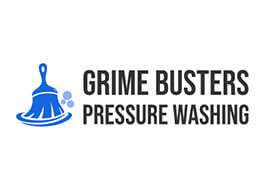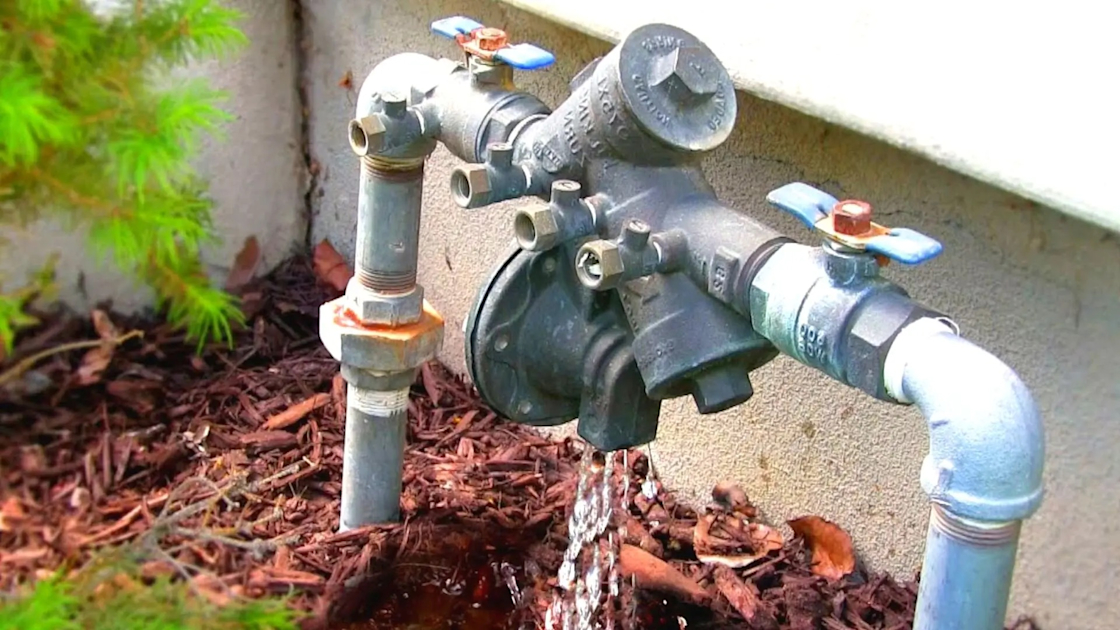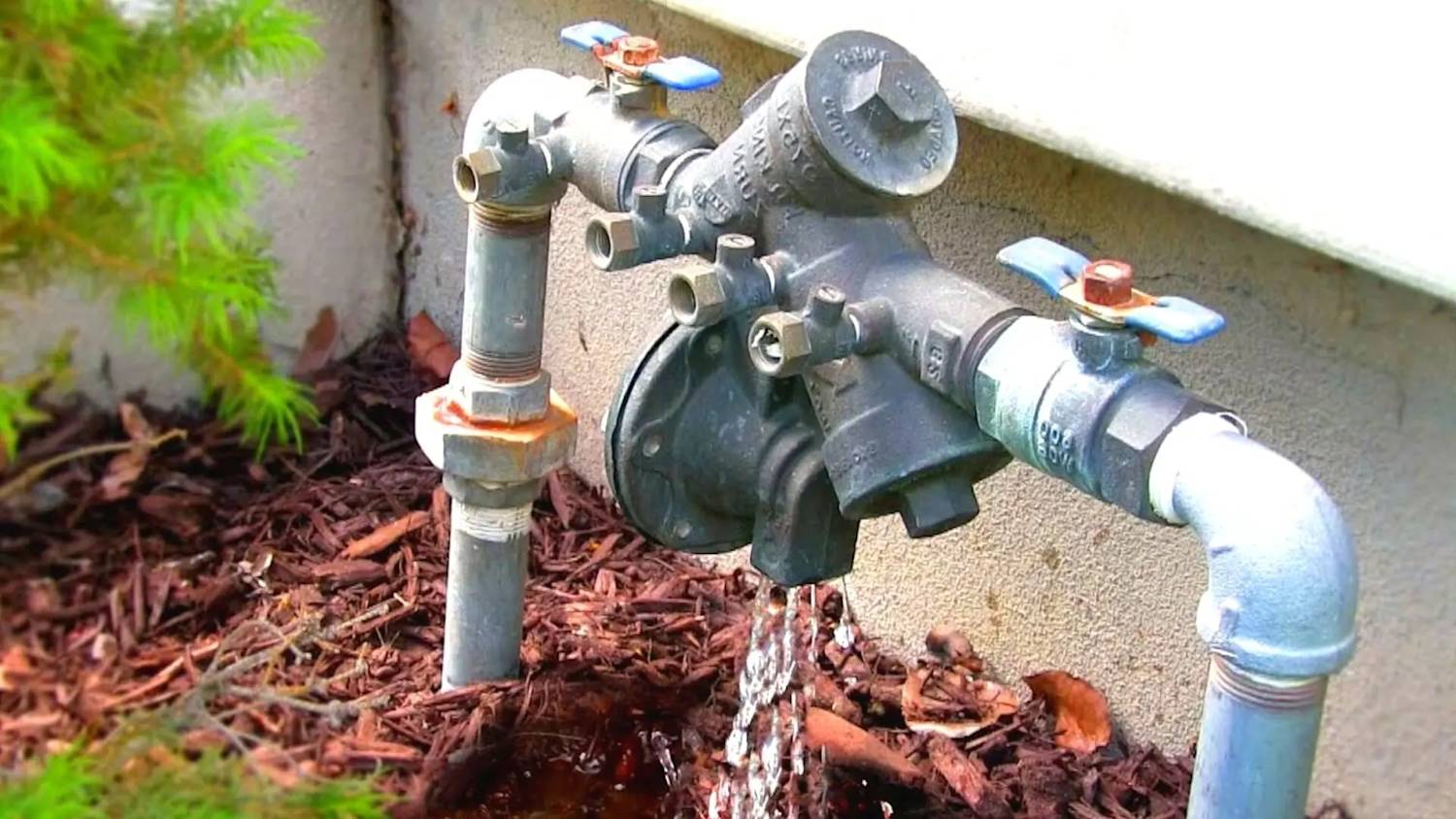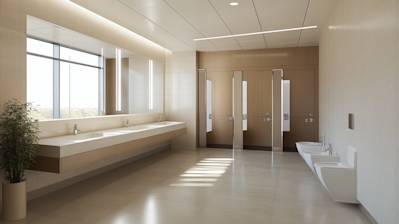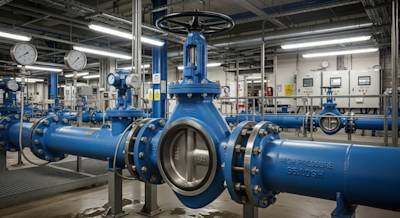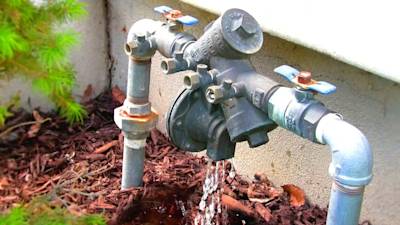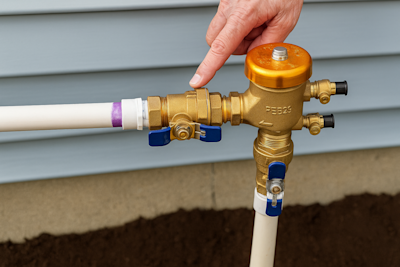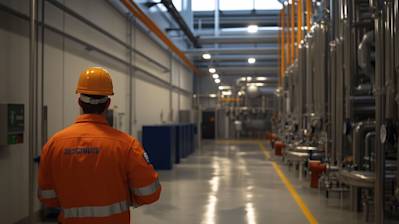As homeowners or business proprietors, conscientious property maintenance is our top priority which includes not just the visible aesthetics, but also the integral systems like plumbing. One of the critical elements in a well-functioning plumbing system is a Backflow Preventer. The key role of a backflow preventer is to maintain a healthy and safe water supply. In this blog article, we delve into the importance and functionality of backflow preventers.
What is a Backflow Preventer?
A backflow preventer is an essential device installed in a plumbing system that prevents water from flowing back into the main water supply. Its primary purpose is to stop any water contamination that may occur due to backflow.
##Understanding Backflow
To fully understand the importance of a backflow preventer, it is crucial to get a grasp on the backflow phenomenon itself. Here are some terms related to backflow:
Backflow: The undesirable reversal of water flow in a potable water distribution system.
Back Pressure: A condition in which pressure inside a system becomes greater than the supply pressure, causing a reversal of flow.
Back-Siphonage: A condition caused by a negative pressure in the supply line, which could draw water out of a system and back into the supply line.
The Significance of Backflow Preventers
The design of a backflow preventer helps to circumvent any potential contamination of the water. Uncontaminated, clean water is directed one way into your property. If there's a sudden or unexpected change in pressure, water could potentially flow back into the public water system, carrying along with it pollutants and contamination. A backflow preventer helps avoid this issue, thereby eliminating a significant risk to public health.
Backflow Preventer Components
A backflow preventer comprises various essential components. Understanding these could help in identifying any issues and their solutions easily.
Check Valves: These are present in pairs and serve to allow the water to flow in one direction only and prevent reverse flow.
Relief Valve: This comes into play if both check valves fail. If the second check valve leaks, the relief valve discharges water to the outside.
Shutoff Valves: They are present on both sides of the backflow preventer enabling easy testing and repair.
Types of Backflow Preventers
Here are some common types of backflow preventers:
Reduced Pressure Zone (RPZ) Backflow Preventer: This is the most secure backflow preventer as it has two check valves that prevent backflow and a pressure zone to indicate valve failure.
Pressure Vacuum Breaker (PVB) Backflow Preventer: A PVB includes a check valve and air inlet valve, making it useful for indoor and outdoor installations.
Double Check Valve (DCV) Backflow Preventer: DCVs consist of two independent check valves, suitable for lower-hazard applications.
Installation and Maintenance
For the installation of backflow preventers, it is advisable to hire professional plumbers. They would conduct an initial backflow test after installation ensuring the device is working correctly.
Routine maintenance and testing are primary responsibilities after installing a backflow preventer. Most jurisdictions require annual testing by certified testers to retain compliance with local codes and ordinances.
Here's a suggestive checklist to keep the backflow preventers in optimum health:
- Conduct annual testing by certified professionals.
- Keep the immediate area around the backflow preventer clean and free from debris.
- Protect the backflow preventer from freezing temperatures.
- Regularly inspect for any visible signs of wear or damage and report it to professionals.
Frequently Asked Questions about Backflow Preventer
What causes backflow?
Backflow usually happens due to changes in water pressure, which could be due to various reasons including pipe freezing, unexpected water demand, or water supply interruption. This might allow contaminated water from storage areas, heating systems, or watering systems to flow back into your clean water supply.
Where is a backflow preventer installed?
In most residential houses, the backflow preventer is installed just after the water meter or in the basement. If your house has an irrigation system, there may be an additional preventer installed outside near the system connection.
What types of backflow preventers are available?
There are various types that include Reduced Pressure Zone (RPZ) backflow preventers, pressure vacuum breaker assemblies, double check valve assemblies, and atmospheric vacuum breakers. The choice of the backflow preventer depends on the level of risk and the specific requirements of your water supply system.
How often should the backflow preventer be inspected?
It is recommended to have your residential backflow preventer inspected at least once a year. If your household water usage is high or if you're located in a commercial area, it might be necessary to have more frequent inspections.
What happens during a backflow preventer inspection?
During an inspection, a certified plumber tests to make sure that the device is functioning properly to keep your water safe. The test involves checking the avoidances and reliefs valves for any leakage and verifying that the pressure differential holds up.
Can I install a backflow preventer on my own?
While it might seem like a simple procedure, installing a backflow preventer requires technical knowledge and adherence to local plumbing codes. Not installing the device correctly might cause it to malfunction eventually, leading to water contamination. Therefore, it is recommended to hire a certified plumber for installation.
What symptoms indicate a backflow preventer issue?
Some signs might indicate an issue with your device - frequent pipe leakages, unusual changes in water pressure, or an unexpected increase in your water bill. If you notice any of these symptoms, it's recommended to call your plumber for an inspection.
Who can repair a backflow preventer?
Any repairs should be undertaken only by a certified and experienced plumber. It's essential to ensure that the person repairing the backflow preventer has formal training and certification in backflow prevention.
How long does a backflow preventer last?
On average, a well-maintained backflow preventer can last anywhere between 3 to 5 years. Regular maintenance and proper installation could extend its lifespan further.
Pros of Backflow Preventer
Essential Guard Against Contamination
A backflow preventer effectively stops contaminants or pollutants from getting into a domestic water supply. This vital piece of plumbing equipment serves as a blockade against harmful substances, ensuring clean, safe water flows through your system.
Cost-Effective
In the larger scheme of things, using a backflow preventer can end up being quite a cost-effective solution. It prevents potential water contamination and the subsequent need for costly water treatments or repairs. Additionally, considering the public health costs in case of a waterborne disease outbreak, the price of backflow preventers is quite reasonable.
Mandatory and Regulatory Compliance
Most jurisdictional authorities make it a requirement for public and commercial buildings to have backflow preventers, and it's also advisable for residential properties. These regulations are put in place to ensure the safety of potable water supplies. By installing a backflow preventer, you are not only ensuring the safety of your water supply, but also complying with local health and safety regulations.
Simplified Maintenance
Routine testing and inspection can ensure your backflow preventer is in good working condition. The maintenance of these devices is relatively easy, involving a simple annual inspection that can be performed by a certified professional.
In Range of Types and Sizes
Backflow preventers are offered in various sizes and types to accommodate different requirements. This means you can choose a backflow preventer exactly suitable for your plumbing system based on pipes' size and the degree of hazard.
Cons of Backflow Preventer
Regular Inspection Requirement
Backflow preventers require regular inspections and maintenance, usually at least once a year. This is to ensure they are functioning correctly and maintaining necessary safety standards. If regular inspection and maintenance are not conducted, it can directly risk water contamination.
Initial Installation Cost
While the cost of a backflow preventer can be considered cost-effective long term, they can present a substantial upfront expense. The initial price of the device, along with the cost of professional installation, can be costly for some homeowners.
Professional Installation
Installation of a backflow preventer is not a simple DIY task. They need to be installed by a certified professional to ensure proper functionality. This could add onto the overall costs of having a backflow preventer.
Potential for Damage
Depending on the type and model, backflow preventers may get damaged or wear out over time. Parts like check valves and relief valves can get clogged or damaged that would hinder the device performance and require repairs or replacement.
Limited Lifespan
No matter how well one maintains their backflow preventer, it has a finite lifespan. Eventually, it will need to be replaced. The lifespan of backflow preventers varies widely depending upon its usage, maintenance, water quality, and the particular model.
Flow Restrictions
Backflow preventers can sometimes cause a reduction in water pressure. This is because the design of the device creates an obstruction in the water line, which can restrict the flow of water. This could potentially impact appliances and fixtures that require a certain level of water pressure to operate effectively.
Myths and Misconceptions Surrounding the Backflow Preventer
Backflow preventers play an essential role in maintaining the purity of our drinking water by preventing contaminated water from entering freshwater sources. They have become a crucial part of plumbing systems around the world. Despite this, many misconceptions surround the function, necessity, and maintenance of backflow preventers.
Myth 1: Backflow Preventers are not necessary for private homes
Many people believe that backflow preventers are only necessary in large commercial or industrial structures. This is inaccurate. Backflow incidents can happen in any building, regardless of size or use. A garden hose submerged in a swimming pool or a pet's water dish could allow backflow to occur if there's a sudden change in water pressure. Hence, backflow preventers should be installed in residential premises as well.
Myth 2: All Backflow Preventers are the Same
It's untrue that all backflow preventers are the same. There are multiple types of backflow preventers, each designed for different situations. For example, pressure vacuum breaker assemblies are primarily used in irrigation systems, while reduced pressure principles are often found in commercial buildings.
Myth 3: Backflow Preventers Never Need to be Replaced
Many homeowners and businesses incorrectly believe that once a backflow preventer is installed, it never needs to be replaced. The truth is, like any other mechanical device, backflow preventers can wear out, break, or lose function over time. Replacing your backflow preventer periodically or when it starts showing signs of wear and tear is crucial to prevent backflow incidents.
Myth 4: Backflow Preventers Don't Require Maintenance
Another common misconception is that backflow preventers don't require any maintenance. In reality, they need regular inspection and testing to ensure they are working correctly. Failure to maintain your backflow preventer can lead to malfunction, potentially resulting in water contamination.
Sub-myth: Anyone can perform backflow preventer maintenance
You might think that anyone who's handy with tools can perform maintenance on a backflow preventer. However, only trained and certified professionals should handle backflow preventer testing and repair. These devices are complex, and improper handling can lead to inadequate protection against backflow.
Myth 5: Backflow is Rare and Unlikely to Happen
Many people disregard the importance of backflow preventers, assuming that backflow is a rare occurrence. However, backflow incidents happen more frequently than most people realize. When there's a change in pressure within the plumbing system, backflow can easily occur, making backflow preventers incredibly essential to ensure the safety of your water supply.
Myth 6: All Water Contaminants are Detectable
There's a false belief that if one's water becomes contaminated due to backflow, it will become discolored or have a foul smell. While this is true for some contaminants, many harmful substances do not have an odor or color. Without a backflow preventer, one could be consuming contaminated water without realizing it, posing serious health risks.
Western society places a great deal of trust in the quality of its drinking water. We often take it for granted that our water is safe and pure. The reality is, however, that this security depends in large part on the proper function and maintenance of backflow preventers. By debunking these myths, homeowners, business owners, and communities can better understand the importance of these devices in protecting our water supply.
Summary
So, there you have it! Backflow preventers play an essential role in keeping our water supplies clean and safe. Without these amazing devices, harmful contaminants could easily make their way into our homes, schools, and workplaces through the water supply system. Consequently, our health and safety could be at risk. By using a backflow preventer in your plumbing system, you can rest easy knowing that your water is free of unwanted pollutants and is safe to use.
Think of a backflow preventer as a one-way door for water. It's a pretty cool system, right? Besides, it works tirelessly and efficiently without us being aware of it. So, the next time you pour yourself a glass of tap water or hydrate your lawn, remember the crucial role that the backflow preventer plays in keeping that water pure and uncontaminated.
Lastly, despite its seemingly complicated operation, a backflow preventer needs routine maintenance and inspections to ensure its efficacy. So, make sure to regularly check this little superhero of your home plumbing system. Because in the end, nothing can be more important than the safety and health of our families, and every effort we make in this direction takes us a step closer to this goal - much like the invaluable service of the backflow preventer.
About KYPD Plumbing
KYPD Plumbing is your local expert in all things plumbing, proudly serving the Lexington, KY community. We strive to ensure your plumbing systems are running smoothly, whether it's a minor drip or a major installation. Our team is made up of skilled professionals who genuinely care about delivering standout services and unrivaled customer satisfaction. With years of experience under our belt, KYPD Plumbing turns complex plumbing issues into seamless and hassle-free experiences, all with prompt response and friendly service. It's not just about pipes and drains to us, it's about building a lasting relationship with our Lexington neighbors.
Tags: plumbing, water system, valve,
